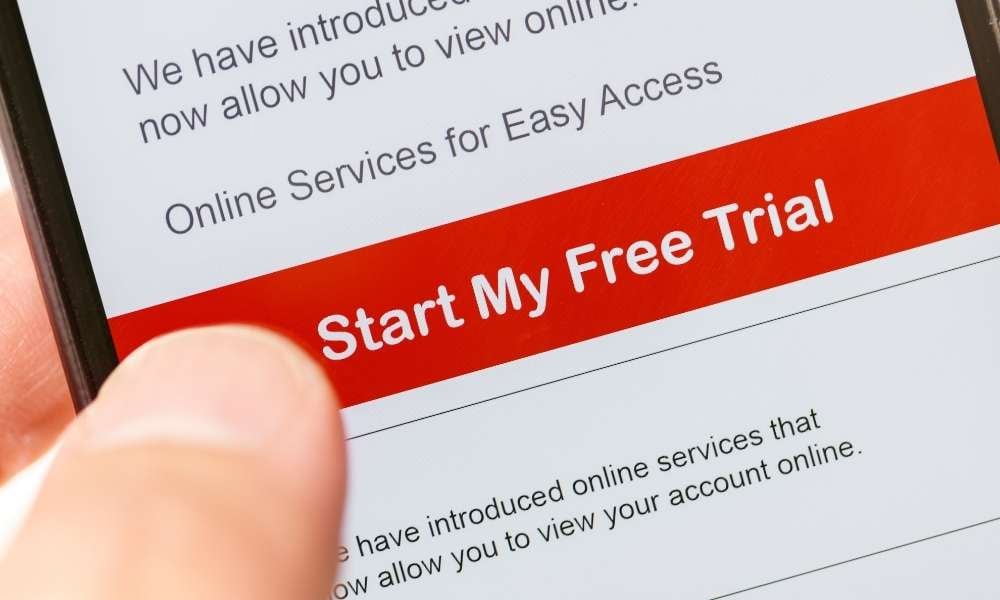How to Turn Your Loyal Customers Into Brand Advocates
It is often argued that customers are the most important part of any business. Whether you manage ...

When it comes to building trust in a SaaS product, customers have a lot of concerns that need to be addressed. Data privacy is at the top of the list, but there are a number of other issues as well that need to be taken into consideration when building trust.
In this blog post, we will start by explaining how you can make sure your SaaS meets the baseline requirements for trust. Next, we will give you 12 tips to help build trust with your customers. Trust is essential for any business - don't neglect it when building your SaaS company!
In the age of data breaches and privacy concerns, people are more wary than ever about trusting companies with their personal information. When it comes to SaaS products, this mistrust can be a major obstacle to overcome. After all, why would someone want to use your product if they don't trust that you will keep their data safe?
It's essential that you address these concerns head-on and build trust with your potential customers. But how can you do that?

The first step when is to ensure that your product meets the baseline requirements for building trust in any SaaS product: security, uptime, speed, and relevance. If you can't meet these expectations, customers will be unlikely to trust your product in any case.
When talking about baseline security, we're talking about the first impression customers have concerning your security measures. This includes everything from the way your website looks to the way you handle customer data.
Ways to improve the perceived security of your SaaS product are:
Additional resource: here you can find 68 tips for designing a trust-centered website.
Uptime is the second baseline requirement for trustworthiness. Customers need to know that your product will be available when they need it, without exception.
There are a few different ways to improve your uptime:
The third baseline requirement is speed. Customers won't wait around for a slow product; they'll simply find something else that meets their needs.
The final baseline requirement is relevance. Customers need to know that your product is relevant to their needs - if they can't see how it would be useful to them, they're not going to bother using it. You can build baseline relevance for customers by:
Continuously put yourself in the shoes of your target audience: is it clear on your website how you're solving their problems? Is the copy on your website written in such a way that they see the benefits you're offering to them?
If you can't answer these questions with a resounding "yes", you need to work on your relevance.

Once you've met the baseline requirements for trustworthiness, you can start working on building trust with your customers. Here are 12 tips to help you do that:
The Zero Trust architecture approach is a security model that's based on the principle of "never trust, always verify". In other words, even if someone has been authenticated, you still can't assume that they're trustworthy.
This approach is becoming increasingly popular as businesses strive to improve their security measures. By implementing a Zero-Trust approach, you're sending the message that you take customer security seriously, and are willing to go the extra mile to protect their data and earn their trust.
Here are some ways to implement a Zero-Trust approach to data security for SaaS:
No matter how much you improve your security measures, there's always a chance that data could be breached.
The best way to build customer trust is to be open and honest about how you handle data breaches. By sharing information about your incident response plan, you're letting customers know that you're prepared for the worst and are committed to protecting their data.
Things you should include in your data breach response plan are:
By sharing this information with your customers, you're building trust and showing that you're committed to protecting their data.
When collecting information from customers, only ask for the bare minimum that you need. The more information you have, the greater consequences are in case of a data breach.
By only asking for the information you need, you're showing respect for your customers' privacy and making it clear that you're not interested in collecting data for data's sake.
In addition, make sure you have a plan for how you'll use the information you collect. Customers should be able to opt-in to data collection, and they should know exactly how their data will be used.
By being careful about the information you request and being transparent about how that information will be used, you're building customer trust.

Another way to build customer trust is to be transparent about your pricing, as also explained in this blog post about SaaS growth strategies. Customers need to know exactly what they're getting for their money, and they shouldn't be surprised by hidden fees or unexpected charges.
The best way to be transparent about your pricing is to have a clear, concise pricing page on your website, that outlines everything in plain language. Having a table that shows how features change with each pricing tier is a helpful way to show this information.
You can also include FAQs about your pricing, and make sure that your customer support team is well-versed in your pricing model.
Having a customer support team is essential to building trust with your customers. When something goes wrong, they need to know that they can reach out to you and get help.
There are a few different ways to make it easy for customers to get in touch with you:
When you've made sure that it's easy for customers to get in touch with you, it's important to actually respond to their inquiries quickly and efficiently.
No one likes being put on hold or waiting days for a response, so make sure your customer support team is equipped to handle customer inquiries in a timely manner. If you take too long to get back to them, they'll start to lose trust in your company.
The best way to ensure quick responses is to have a system in place for routing customer inquiries to the right team member. You should also set expectations with customers about how long it will take to hear back from you.
For example, you could say something like "Our team will get back to you within one business day."

When potential customers see that you have an active social media strategy and that you're responsive to customer questions and concerns, it will show them that you care about your customers and that you're invested in providing them with a great experience.
Make sure you're active on the social media platforms where your target customers are spending their time. Post relevant, engaging content that will capture their attention and show them what your product can do for them.
In addition, make sure you're monitoring your social media channels for any negative comments or reviews. If you see something, reach out to the customer and try to resolve the issue.
By handling negative feedback in a positive way, you can turn a bad situation into a good one and show other potential customers that you're committed to providing excellent customer service.
Including customer testimonials or case studies on your website is an effective way to build trust in your brand, product, and company. A great testimonial can help you convert more of your visitors into paying customers by demonstrating that real people are using the product and love it.
When a new visitor lands on your website, they're looking for validation that what you're offering will make their lives easier or better in some way - case studies and testimonials provide just that sort of reassurance.
Another great way to build trust with your customers (and an effective SaaS marketing strategy) is to build a community around your product. This can take many different forms, but the goal is always the same - to make your customers feel like they're part of something larger than just a transaction.
One way to do this is to create an online forum or private Facebook group where customers can interact with each other and ask questions, give feedback, and share ideas.
This could be in the form of a blog, an email newsletter, or even a podcast. The goal is to provide value to your audience on a regular basis so they know that you're an expert in your field and can be trusted to provide accurate information.
When you're publishing content, make sure it's well-researched and relevant to your target audience. If you can provide helpful tips, advice, or insights that will make their lives better in some way, you'll quickly build trust with your readers.

A money-back guarantee is a great way to show customers that you're confident in your product and that you're willing to put your money where your mouth is.
This type of guarantee shows customers that you're not afraid to stand behind your product, even if it means giving them their money back. It's a risk-reducing way for them to try out your product and see if it's the right fit for them.
If you're not sure how to implement a money-back guarantee, start by offering a free trial period. This will give customers a chance to use your product and make sure it meets their needs before they commit to paying for it.
The final way to build trust with your customers is to make it easy for them to cancel their subscription if they're not happy with the product. No one wants to feel like they're locked into a contract, so giving your customers the ability to cancel at any time will help them feel more comfortable using your product.
Building trust is essential for any SaaS product—it's what convinces customers to sign up and stay loyal to your brand. By following the tips we've outlined in this blog post, you can create a strong foundation of trust that will help you convert more visitors into paying customers, as well as retaining more of your existing customers.

Carolina Posma is a writer for Trust Signals.

It is often argued that customers are the most important part of any business. Whether you manage ...

Note: At the outset of his new book, Beyond Expertise: How Trust, Vision and Delivery Will Redefine...
Leave a Comment